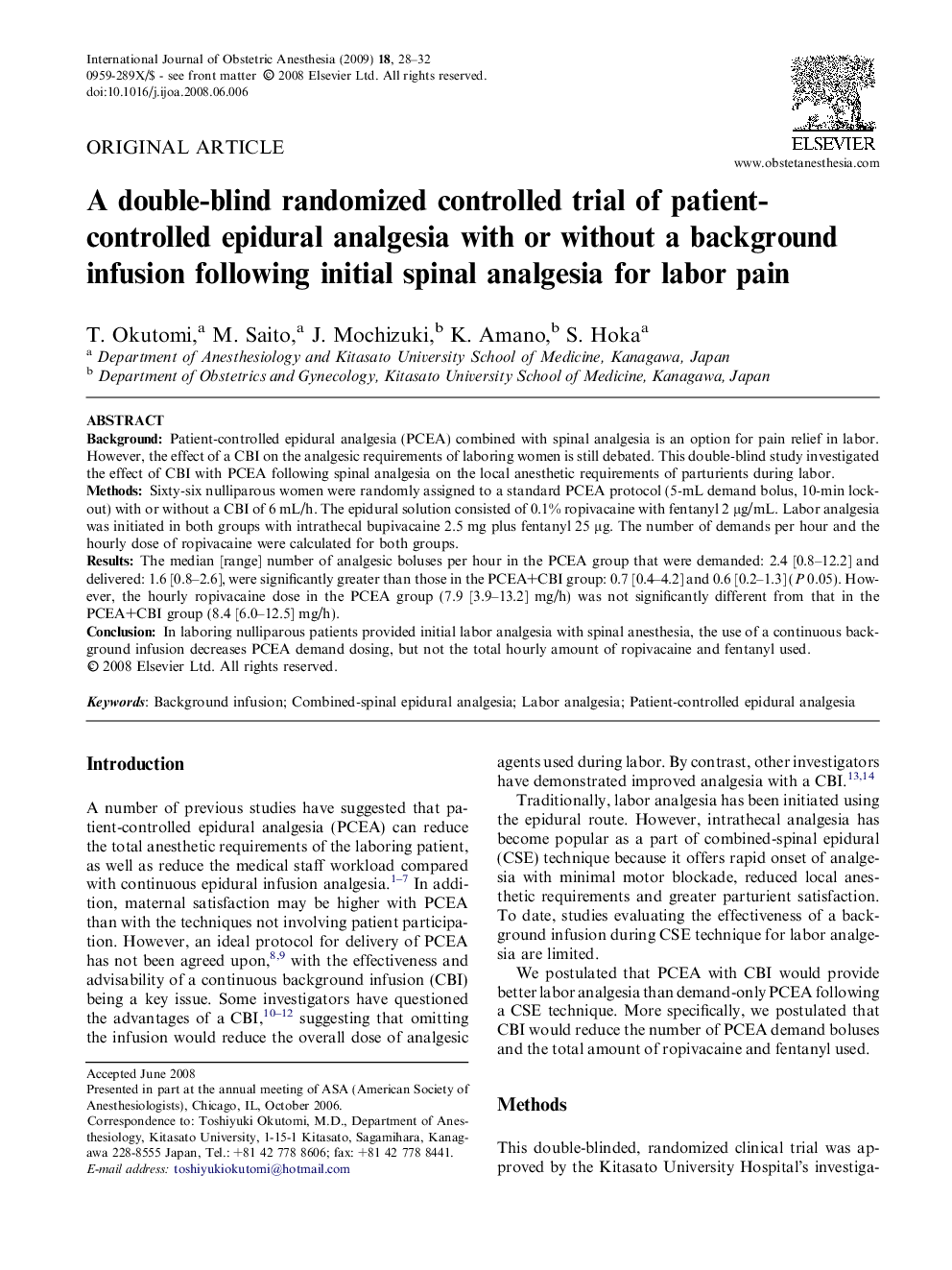| Article ID | Journal | Published Year | Pages | File Type |
|---|---|---|---|---|
| 2758624 | International Journal of Obstetric Anesthesia | 2009 | 5 Pages |
BackgroundPatient-controlled epidural analgesia (PCEA) combined with spinal analgesia is an option for pain relief in labor. However, the effect of a CBI on the analgesic requirements of laboring women is still debated. This double-blind study investigated the effect of CBI with PCEA following spinal analgesia on the local anesthetic requirements of parturients during labor.MethodsSixty-six nulliparous women were randomly assigned to a standard PCEA protocol (5-mL demand bolus, 10-min lockout) with or without a CBI of 6 mL/h. The epidural solution consisted of 0.1% ropivacaine with fentanyl 2 μg/mL. Labor analgesia was initiated in both groups with intrathecal bupivacaine 2.5 mg plus fentanyl 25 μg. The number of demands per hour and the hourly dose of ropivacaine were calculated for both groups.ResultsThe median [range] number of analgesic boluses per hour in the PCEA group that were demanded: 2.4 [0.8–12.2] and delivered: 1.6 [0.8–2.6], were significantly greater than those in the PCEA+CBI group: 0.7 [0.4–4.2] and 0.6 [0.2–1.3] (P 0.05). However, the hourly ropivacaine dose in the PCEA group (7.9 [3.9–13.2] mg/h) was not significantly different from that in the PCEA+CBI group (8.4 [6.0–12.5] mg/h).ConclusionIn laboring nulliparous patients provided initial labor analgesia with spinal anesthesia, the use of a continuous background infusion decreases PCEA demand dosing, but not the total hourly amount of ropivacaine and fentanyl used.
